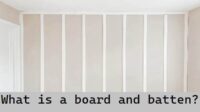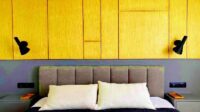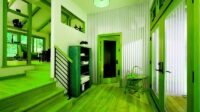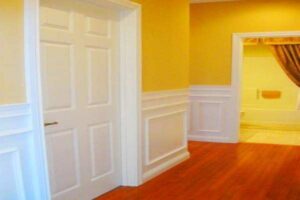When it comes to interior wall cladding, two popular options are shiplap vs tongue and groove.
Both are excellent choices for adding character and texture to your walls, but they differ in terms of appearance, installation, and cost.
We’ll explore the differences between shiplap and tongue and groove, and help you decide which option is best for your home.
What is Shiplap?
Shiplap is a type of wooden board that has a groove cut into one side and a protruding edge (or “rabbet”) on the other.
These boards are installed horizontally, with the rabbet of each board fitting into the groove of the board above it. This creates a tight, overlapping fit that helps to keep out moisture and drafts.
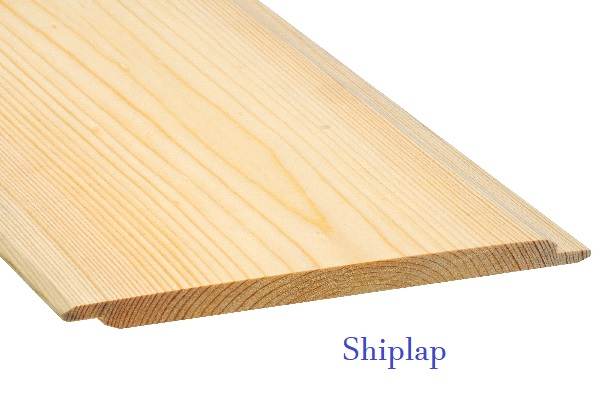
Pros of Shiplap:
- Gives a rustic, farmhouse look
- Easy to install
- Can be used on walls and ceilings
- Suitable for both interior and exterior use
- Can be painted or stained to match any decor
Cons of Shiplap:
- Limited design options
- Can be expensive compared to other options
- May not be suitable for all styles of homes
What are Tongue and Groove?
Tongue and groove is a similar type of wooden board, but instead of a rabbet, it has a tongue on one edge and a groove on the other. The tongue fits snugly into the groove of the adjacent board, creating a seamless, interlocking connection.
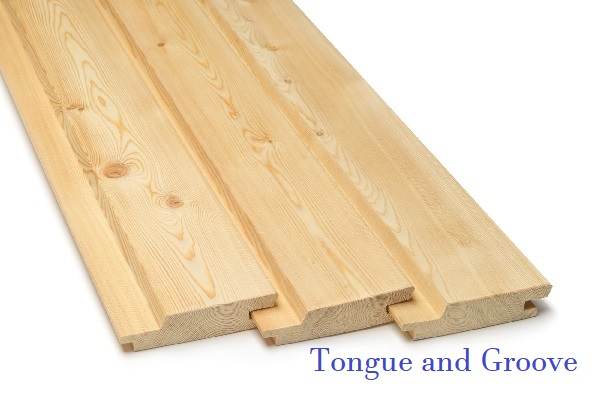
Pros of Tongue and Groove:
- Provides a clean, polished look
- Wide range of design options
- Can be used on walls and ceilings
- Suitable for both interior and exterior use
- Can be painted or stained to match any decor
Cons of Tongue and Groove:
- More difficult to install than shiplap
- Requires precise measurements and cutting
- May be more expensive than shiplap
Shiplap vs Tongue and Groove: Which is Better for Your Home?
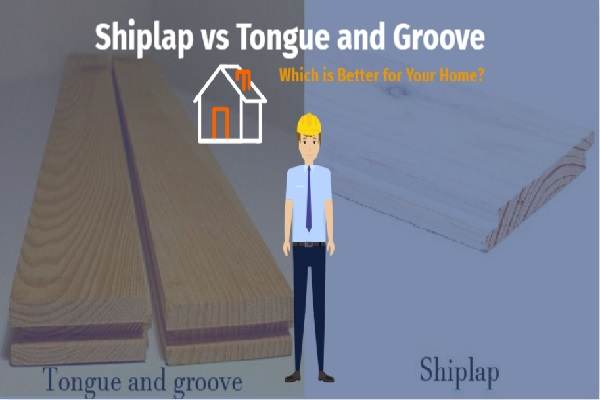
Ultimately, the choice between shiplap and tongue and groove comes down to personal preference and budget. If you’re going for a rustic, farmhouse look, shiplap may be the way to go. However, if you’re looking for a more polished, modern look, tongue and groove might be a better fit.
In terms of installation, shiplap is generally easier to install than tongue and groove, making it a good choice for DIYers or those on a tight budget. However, tongue and groove provide a more seamless, polished look that is worth the extra effort and expense for some homeowners.
When it comes to cost, both shiplap and tongue and groove can be expensive compared to other wall cladding options, but the cost can vary depending on the type of wood and the quality of the boards.
Ultimately, the choice between shiplap and tongue and groove comes down to your style and budget. Both options are excellent choices for adding character and texture to your walls, so choose the one that best fits your home and your preferences.
Conclusion
Shiplap and tongue and groove are both excellent options for adding character and texture to your walls. Shiplap provides a rustic, farmhouse look that is easy to install and can be used in a variety of settings. Tongue and groove provide a more polished, modern look that requires more precise installation but provides a seamless, interlocking connection.
When deciding between shiplap and tongue and groove, consider your style and budget. Both options have their pros and cons, so choose the one that best fits your needs and your home.
What is shiplap made of?
Shiplap is typically made from wood, such as pine or cedar, but it can also be made from composite materials like MDF or PVC.
Is shiplap waterproof?
While shiplap can help to keep out moisture and drafts, it is not completely waterproof. It is still important to ensure that the walls behind the shiplap are properly sealed and waterproofed.
Can tongue and groove be installed vertically?
Yes, tongue and groove can be installed vertically as well as horizontally, giving you more design options.
Can shiplap be painted?
Yes, shiplap can be painted or stained to match any decor. It is important to properly prepare the wood and use high-quality paint or stain for the best results.
Can tongue and groove be used for exterior walls?
Yes, tongue and groove can be used for exterior walls, but it is important to use a type of wood that is suitable for outdoor use and to properly seal and waterproof the walls.
Can shiplap be used on ceilings?
Yes, shiplap can be used on ceilings to create a unique and textured look.
Can shiplap be installed vertically?
Yes, shiplap can be installed vertically for a unique and modern look.
How do I clean shiplap or tongue and groove walls?
Both shiplap and tongue and groove can be easily cleaned with a soft cloth or duster. For tougher stains, a mild soap and water solution can be used.

